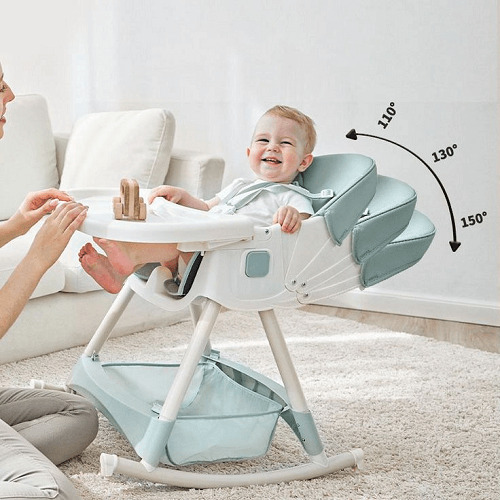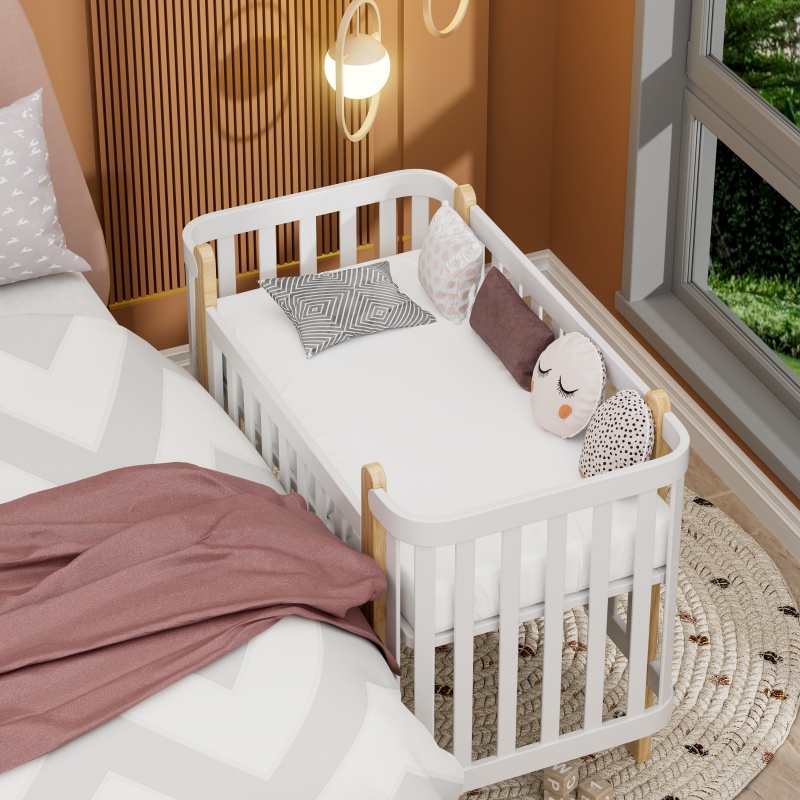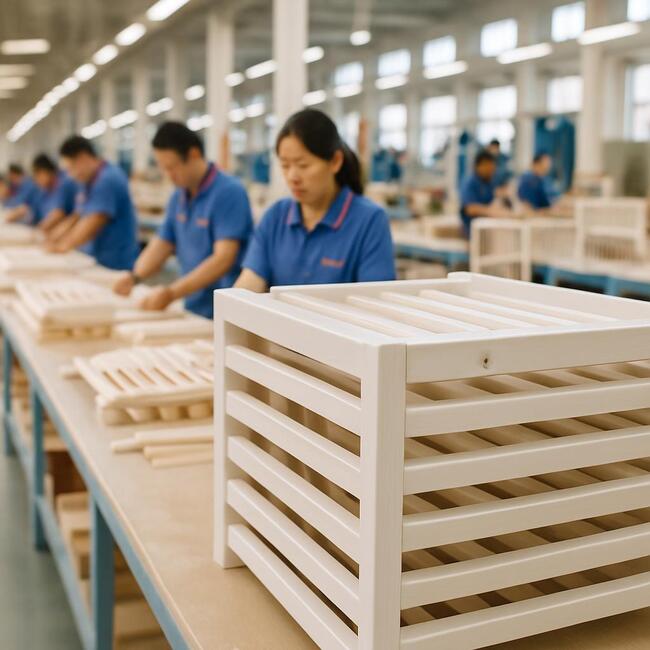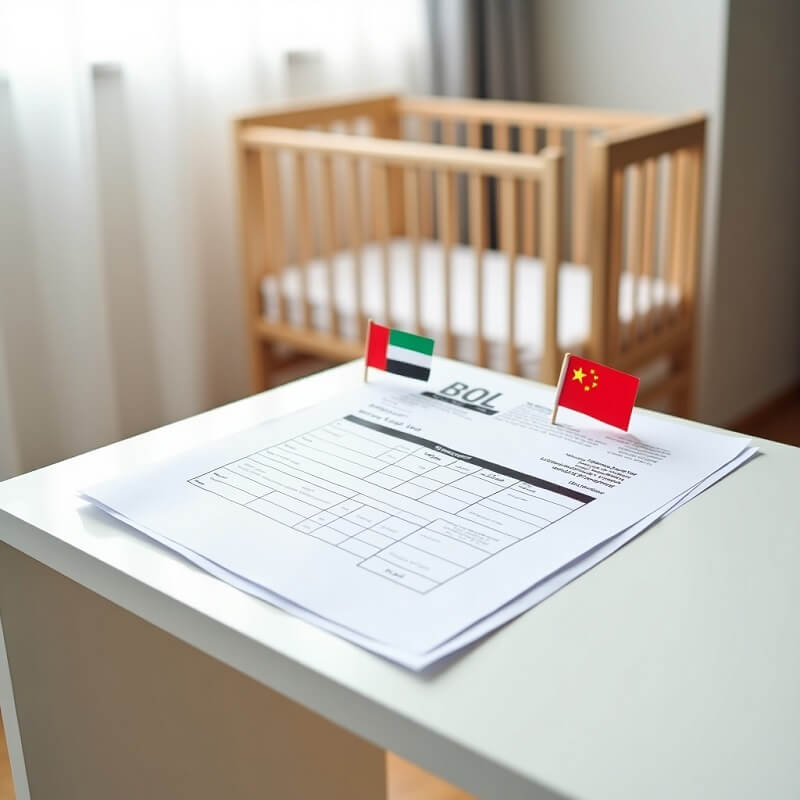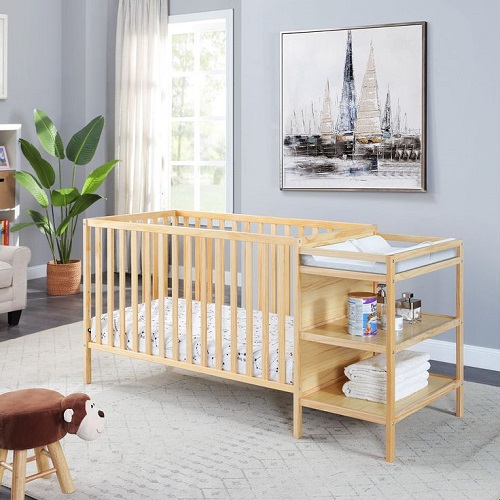Some parents rely on a swing or bouncer to help calm their infant during the first few months of life. Both of these mimic the rocking motion that your unborn child is accustomed to from the womb or from your arms.
Despite their apparent similarities, they have distinct features and advantages. So if you’re trying to decide which one to add to your registry, this guide can help.
In this post, We will explore bouncers and swings to show you what they are, their benefits and drawbacks, and how to choose the one that could be best for your family.
What Is a Bouncer?
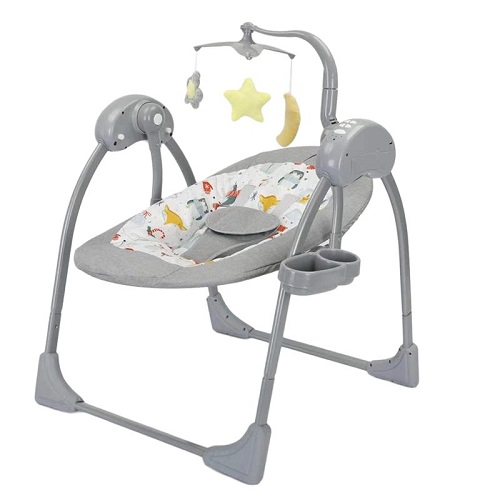
Imagine a cozy, portable seat that provides your baby with a gentle, reassuring sense of movement with even the slightest wiggle. That, in essence, is a baby bouncer. Often lightweight and compact, a bouncer is typically a semi-reclined seat mounted on a flexible frame that responds to a baby’s own natural movements.
When your baby kicks or squirms, the frame bends, creating a soft, bouncing motion that many infants find calming and entertaining.
Key Features of a Baby Bouncer
- Lightweight and portable design, Foldable frame
- Breathable textiles and mesh
- Simple, manual bouncing motion
Benefits of Using a Baby Bouncer
Unlike powered baby gear, it doesn’t require batteries or outlets; the gentle rocking comes naturally from the baby’s own movements or a soft nudge from a parent. This motion not only soothes but also helps stimulate your baby’s developing motor skills from the newborn stage onward, even before they can hold up their head or neck fully.
Most baby bouncers are lightweight, easy to fold, and convenient to store or take along on trips. The fabric seat is usually removable, machine washable, and even replaceable, making it hassle-free to keep clean. And because there’s no motor involved, a baby bouncer remains completely silent.
Limitations of Baby Bouncers
Most models are designed for short-term use, suitable only for newborns up to about six months of age, with typical weight limits ranging between 18 and 30 pounds. Exceeding these limits can make the bouncer unsafe, as it may tip over once a baby becomes too heavy or active.
Another consideration is sleep habits. Because the gentle rocking can be so soothing, babies may quickly become accustomed to dozing off in the bouncer, which can interfere with crib training if used too often. Finally, unlike swings, baby bouncers don’t have automated motion and rely entirely on your baby’s own movements or a parent’s touch, which may not always provide the continuous soothing some babies need.
What Is a Baby Swing?

If a bouncer is like a cozy recliner, a baby swing is more like a gentle, rhythmic glide through the air. Designed to mimic the soothing, continuous motion that parents naturally use to calm their babies, a swing provides automated movement powered by batteries or electricity.
Usually swinging back and forth, they simulate the soft rocking motion of a stroller or carriage. Typically, baby swings have several motions and speed adjustments. Additionally, swings offer your kid a mild kind of exercise that may be good for their growth.
Key Features of a Baby Swing
A baby swing has a broad, non-slip base and a strong frame. They also provide a plethora of other features, such as:
- White noise, calming music
- light
- Detachable toys
- Some have timer settings
- Bluetooth connectivity
- Rocking motions
Benefits of Using a Baby Swing
Baby swings offer continuous, soothing motion that many infants find comforting, providing a consistent rhythm that a simple bouncer cannot. They are generally suitable for use from birth up to around 12 months, making them a longer-term option as your baby grows.
The gentle, repetitive movement helps infants better integrate and interpret sensory information, which can be particularly beneficial for babies with sensory sensitivities. Many swings also come with adjustable speed and motion settings, allowing parents to customize the experience for their baby’s comfort and preferences.
Limitations of Baby Swing
Their larger, sturdier frames require a significant amount of space, making them less convenient for smaller rooms. Setting up a swing can also be more challenging compared to a simple bouncer, due to its size and assembly requirements.
Additionally, swings tend to be more expensive and are not as portable, making it difficult to move them between rooms or take them along on trips. These factors can make swings less practical for families seeking a compact, easily transportable option.
Do I Need a Bouncer or a Swing?
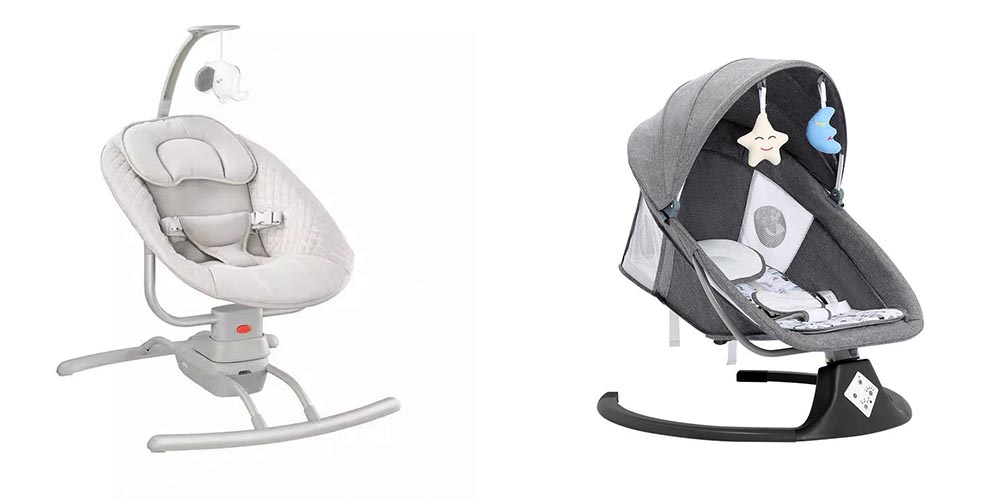
The answer to this question ultimately boils down to personal preference, just like so many other pieces of baby gear. Swings and bouncers are both excellent ways to soothe fussy newborns. When used correctly and under supervision, these baby gears are safe and amazing.
Although they are not essential for every family, a swing and a bouncer may both be quite helpful. These gadgets give the infant a secure place to unwind, which can be invaluable for parents who need some alone time.
By keeping infants occupied, these gadgets can provide parents with much-needed respite. They give parents a variety of methods to calm their infants because rocking them with their hands for extended periods of time can be exhausting. This is especially helpful when the baby is being fussy.
By using these products, parents can have a few minutes of rare quiet time to restore their energy and avoid falling into excessive burnout. I believe that all parents are looking forward to this short but precious moment of leisure.
These baby products are lifesavers for parents who need to multi-task! Whether it’s cooking, answering emails, or tidying up the room, these baby products provide a safe and comfortable space for the baby so parents can focus on other tasks.
Difference Between a Bouncer and a Swing
A baby swing and a baby bouncer vary primarily in that the bouncer rocks naturally, whereas many baby swings are powered by electricity or batteries.
In a classic baby swing, your infant sits in a seat that is reclined and gently sways back and forth or side to side, in calming motions that can soothe a fussy baby or lull them to sleep.
A bouncer is a smaller seat that merely raises and lowers the infant, offering fun movements that can stimulate your child while playing.
Here are the more specific differences between the two:
| Feature | Baby Bouncer | Baby Swing |
| Design and Size | Lightweight and compact | Heavier and larger |
| Motion Type | Bouncing motion | Rocks back and forth or side to side |
| Age Suitability | Typically for younger infants from birth to six months old. | Can accommodate larger babies of up to 12 months. |
| Portability | Highly portable, easy to move and travel with. | Not as easy to move between rooms or transport |
| Space Requirements | Small footprint; great for limited space. | Larger footprint; takes up more space in the room. |
| Multifunctionality | Primarily essential for bouncing | Often includes more features like music and toys. |
| Comfort for Baby | Comfortable, but less supportive for long periods. | usually offer more plush seating and better support for longer use |
| Best for | Small spaces, short-term use, travel, or quick soothing. | Babies needing additional soothing or longer periods of use. |
Factors to Consider When Choosing Between a Baby Bouncer and Swing
Your Baby’s Temperament: Observe how your little one responds to movement. Do they calm down when gently bounced in your arms, or do they prefer the slower, broader sway of being rocked? A baby who is soothed by subtle, responsive motion might thrive in a bouncer, while one who needs stronger, consistent rhythmic movement may find greater comfort in a swing.
Available Space: Consider where you plan to use the product and how much room you can dedicate to it. Bouncers are generally compact and lightweight, making them ideal for smaller homes or apartments. Swings, on the other hand, often require a designated spot due to their larger size and need for stability.
Budget: Bouncers tend to be more affordable, offering a simpler set of features at a lower price point. Swings, with their motors, multiple motion settings, and additional features like music or mobiles, often come with a higher initial cost.
Safety Priorities: Ensure any model you choose meets current safety standards, has a secure harness, and is used only under supervision. Remember that neither a bouncer nor a swing should be used for unsupervised sleep, as they do not provide the flat, firm surface recommended for safe infant rest.
Expert Tips for Using Baby Bouncers and Swings Safely

It’s crucial to utilize these baby gears cautiously despite all the advantages. Let’s examine some important pointers to remember when utilizing them.
Prioritize Supervision: Always keep your baby within sight and reach when they are in a bouncer or swing. Never leave them unattended, especially if older siblings or pets are present who might unintentionally interact with the product.
Use the Harness Every Time: The harness should fit snugly but comfortably, with straps properly fastened at the crotch and shoulders to prevent your baby from sliding down or tipping forward.
Place on a Flat, Stable Surface: Always position the bouncer or swing on a level floor away from hazards like stairs, cords, or furniture. For bouncers, avoid placing them on elevated surfaces such as beds, couches, or countertops, as even a gentle kick could shift the product and cause it to fall. Swings should be placed where their motion won’t cause them to collide with walls or other objects.
Follow Weight and Age Limits: Respect the manufacturer’s weight and age recommendations. Discontinue use once your baby exceeds the weight limit or shows signs of being able to sit up, roll over, or push up on their hands and knees.
Avoid Sleep Use: While it’s common for babies to doze off in bouncers or swings, these products are not designed for prolonged sleep. If your baby falls asleep, move them to a firm, flat crib or bassinet as soon as it’s practical.
Limit Time: Use bouncers and swings in moderation. Extended periods in these devices can limit opportunities for tummy time, free movement, and interaction with their environment—all essential for physical and cognitive development. Additionally, if they seem uncomfortable, fussy, or slumped over, remove them immediately.
Conclusion
Each product offers unique benefits: the bouncer, with its portability and responsive bounce, suits parents seeking a lightweight companion for everyday moments, while the swing’s powered, consistent motion provides deeper soothing for babies who crave rhythmic comfort. What matters most is how either—or neither—fits into your life.
If you are still unsure, it is always a good idea to check with your pediatrician or seasoned baby manufacturers like Clafbebe before making a purchase.
Recommended Related Articles:
- Are Bouncers Safe for Newborns?
- The Ultimate Guide to Baby Bouncers in 2025
- When Can Baby Use Bouncer?
- Can a Baby Sleep in a Bouncer?
- Baby Swing Weight Limit: What You to Know
- What Is the Baby Bouncer Weight Limit?
- Top 12 Baby Bouncer and Swing Manufacturers
- How Long Can a Baby Be in a Swing? A Guide for Parents
- Baby Bouncer Vs Rocker: How to Choose?
- What to Look for in a Baby Bouncer?

